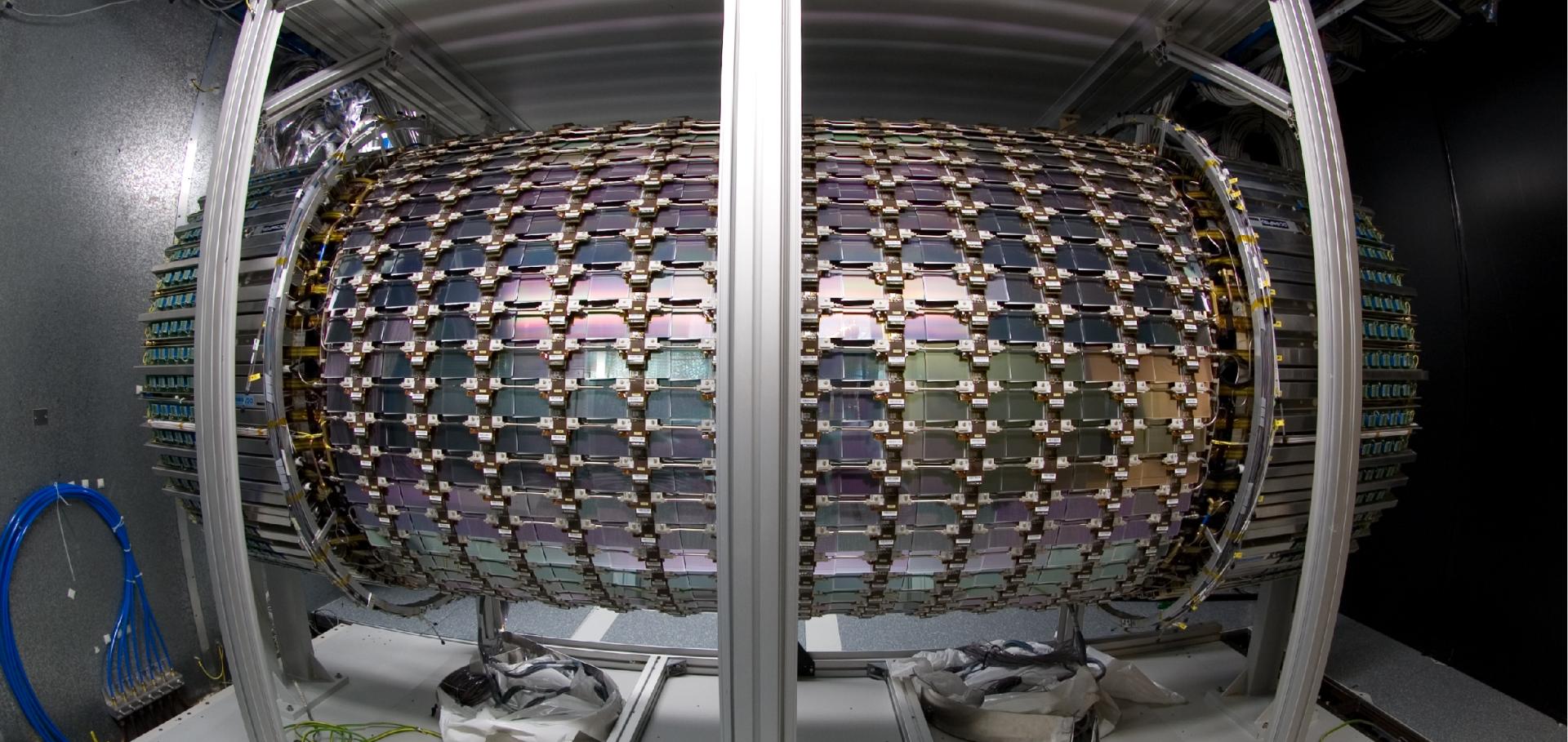Observation of a centrality-dependent dijet asymmetry in lead-lead collisions at √sNN =2.76 Tev with the ATLAS detector at the LHC
Physical Review Letters 105:25 (2010)
Abstract:
By using the ATLAS detector, observations have been made of a centrality-dependent dijet asymmetry in the collisions of lead ions at the Large Hadron Collider. In a sample of lead-lead events with a per-nucleon center of mass energy of 2.76 TeV, selected with a minimum bias trigger, jets are reconstructed in fine-grained, longitudinally segmented electromagnetic and hadronic calorimeters. The transverse energies of dijets in opposite hemispheres are observed to become systematically more unbalanced with increasing event centrality leading to a large number of events which contain highly asymmetric dijets. This is the first observation of an enhancement of events with such large dijet asymmetries, not observed in proton-proton collisions, which may point to an interpretation in terms of strong jet energy loss in a hot, dense medium.© 2010 CERN, for the ATLAS Collaboration.Commissioning of the ATLAS Muon Spectrometer with cosmic rays
European Physical Journal C 70:3 (2010) 875-916
Abstract:
The ATLAS detector at the Large Hadron Collider has collected several hundred million cosmic ray events during 2008 and 2009. These data were used to commission the Muon Spectrometer and to study the performance of the trigger and tracking chambers, their alignment, the detector control system, the data acquisition and the analysis programs. We present the performance in the relevant parameters that determine the quality of the muon measurement. We discuss the single element efficiency, resolution and noise rates, the calibration method of the detector response and of the alignment system, the track reconstruction efficiency and the momentum measurement. The results show that the detector is close to the design performance and that the Muon Spectrometer is ready to detect muons produced in high energy proton-proton collisions. © 2010 CERN for the benefit of the ATLAS collaboration.Readiness of the ATLAS Tile Calorimeter for LHC collisions
European Physical Journal C 70:4 (2010) 1193-1236
Abstract:
The Tile hadronic calorimeter of the ATLAS detector has undergone extensive testing in the experimental hall since its installation in late 2005. The readout, control and calibration systems have been fully operational since 2007 and the detector has successfully collected data from the LHC single beams in 2008 and first collisions in 2009. This paper gives an overview of the Tile Calorimeter performance as measured using random triggers, calibration data, data from cosmic ray muons and single beam data. The detector operation status, noise characteristics and performance of the calibration systems are presented, as well as the validation of the timing and energy calibration carried out with minimum ionising cosmic ray muons data. The calibration systems' precision is well below the design value of 1%. The determination of the global energy scale was performed with an uncertainty of 4%. © 2010 CERN for the benefit of the ATLAS collaboration.Readiness of the ATLAS liquid argon calorimeter for LHC collisions
European Physical Journal C 70:3 (2010) 723-753
Abstract:
The ATLAS liquid argon calorimeter has been operating continuously since August 2006. At this time, only part of the calorimeter was readout, but since the beginning of 2008, all calorimeter cells have been connected to the ATLAS readout system in preparation for LHC collisions. This paper gives an overview of the liquid argon calorimeter performance measured in situ with random triggers, calibration data, cosmic muons, and LHC beam splash events. Results on the detector operation, timing performance, electronics noise, and gain stability are presented. High energy deposits from radiative cosmic muons and beam splash events allow to check the intrinsic constant term of the energy resolution. The uniformity of the electromagnetic barrel calorimeter response along η (averaged over Φ) is measured at the percent level using minimum ionizing cosmic muons. Finally, studies of electromagnetic showers from radiative muons have been used to cross-check the Monte Carlo simulation. The performance results obtained using the ATLAS readout, data acquisition, and reconstruction software indicate that the liquid argon calorimeter is well-prepared for collisions at the dawn of the LHC era. © 2010 CERN for the benefit of the ATLAS collaboration.The ATLAS Inner Detector commissioning and calibration
European Physical Journal C 70:3 (2010) 787-821


